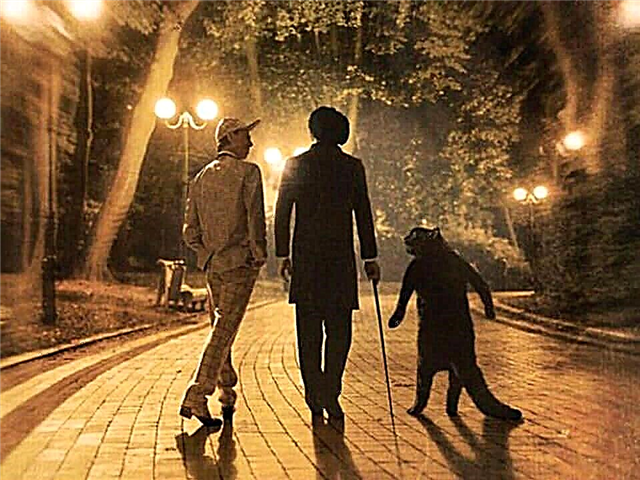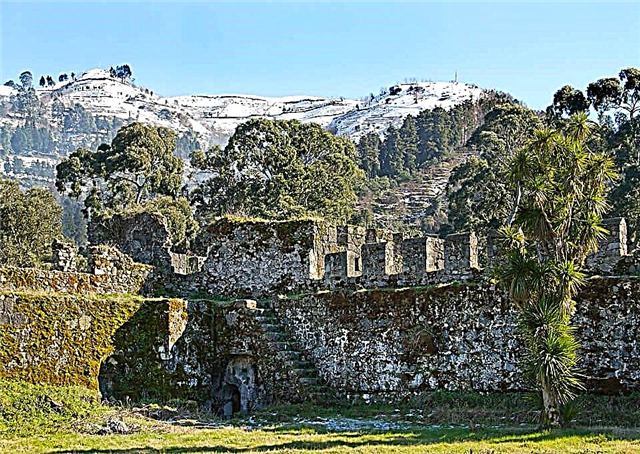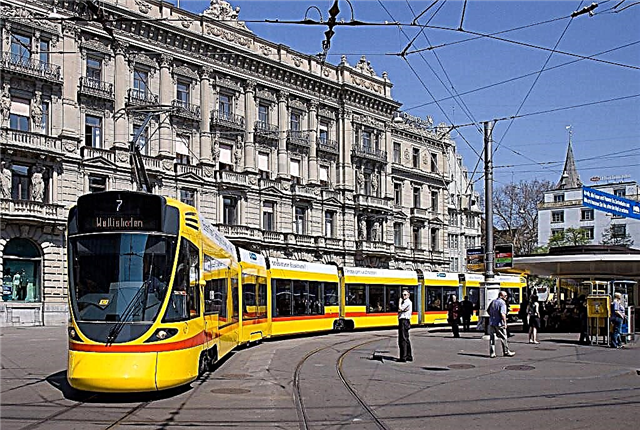Address: Moscow Red Square
First mention: 1625 year
Start of construction: 1990 year
Completion of construction: 1993 year
Project author: O. I. Zhurin, G. Ya. Mokeev
Shrines: Kazan Icon of the Mother of God
Coordinates: 55 ° 45'19.5 "N 37 ° 37'09.0" E
Content:
The small cathedral has a special status among the temples that surround the Moscow Kremlin. It appeared thanks to Prince Dmitry Pozharsky, a national hero and one of the leaders of the popular struggle against the Poles who seized Moscow. In the 1930s, the Kazan Cathedral was completely destroyed, but 60 years later it was rebuilt.

Cathedral in front of the State Historical Museum and Nikolskaya Tower
The history of the famous icon
In 1579, 27 years after the capture of the Kazan Khanate by Russia, a great fire broke out in its capital. The fire was quickly blown away by the wind, and the merciless flames destroyed part of the houses in Kazan. According to the surviving legend, it was then that the ten-year-old Matrona saw the Mother of God in a dream, and she asked her to find the icon in the ashes.
The girl hastened to tell the local priest Yermolai about the dream. When the conflagration was dug up, an image of the Mother of God was actually found in the indicated place. Later, a new nunnery was rebuilt at the fire, and Matrona, taking the name of Mavra, became its first novice.
Several copies or copies were made of the newfound image. The first of them in 1579 was sent as a gift to the Russian sovereign John IV the Terrible. Then icons appeared in other Russian cities. Everywhere they were cherished as shrines, separate churches and monasteries were built in honor of the Kazan icons. The feast of the acquisition of an Orthodox shrine is celebrated today by believers on July 8.
Construction history
A historical guide to the city, published at the end of the 18th century, reported that the first temple, which was erected in honor of the revered icon, appeared near the Kremlin in 1625. It was built of wood with the money of Dmitry Mikhailovich Pozharsky.

View of the Cathedral from Red Square
It is known that during the second people's militia, formed in 1611, Pozharsky did not part with the list made from the famous icon. After the victory over the Polish-Lithuanian invaders and the liberation of the capital, he kept the cherished image in his parish church on Lubyanka. The new wooden cathedral was built by the prince especially for the Kazan icon. However, the church stood for only 9 years and burned down in a fire.
The place near Red Square was not empty for long. Already in 1636, Tsar Mikhail Fedorovich allocated money, and a new stone church was erected near the Moscow Kremlin. As was customary in temple architecture, at the beginning of the 17th century, the bell tower was added to the northwest of the church building. The new church immediately acquired a high status, because it was consecrated by the Moscow Patriarch Joasaph I.
The history of the temple in the 17th-20th centuries
In 1647, a side-altar dedicated to Saints Guriy and Barsanuphius was added to the Kazan Cathedral. The solemn ceremony of its consecration was attended by the son and successor of Mikhail Fedorovich - the Russian sovereign Alexei Mikhailovich.
Despite the fact that the temple was small in size, it has always played an important role in the spiritual life of the city. Kazan Cathedral was revered along with the most famous churches in Moscow, and its abbot was highly respected among the Moscow clergy.
Time passed, and in the 60s of the 18th century, the Kazan Cathedral was reconstructed at the expense of Princess M. Dolgorukova. The dilapidated side-chapel was demolished, and around the bell tower there were many shops selling wax candles, apples and ruddy rolls. For a long time, Moscow merchants were sworn in in the stone church.

View of the cathedral from the State Historical Museum
Over time, the Upper Trading Rows, towering nearby, became so upset that they practically blocked the view of the temple from the Kremlin side. At the very beginning of the 19th century, the hipped-roof bell tower was dismantled, and a two-tiered belfry was erected in its place according to a new model.
Like the rest of Moscow, the Kazan Cathedral underwent many trials during the invasion of French troops in 1812. Before the arrival of enemies near the church, Muscovites willingly bought popular prints and caricatures of the French and Napoleon himself. To prevent the revered icon from getting to the enemy, the priest of the temple hid it in advance. However, when the French troops entered the city, they did not fail to mock the Orthodox church. The soldiers threw the throne out of the altar and dragged a horse corpse into the church.
Another large-scale alteration of the cathedral was carried out in 1865. The architect Nikolai Ivanovich Kozlovsky prepared the project, the temple facades were rebuilt in the classical tradition, and another tier was added to the bell tower. It is noteworthy that both parishioners and priests greatly regretted such changes. After the reconstruction, the Kazan Cathedral lost its original appearance and looked like many rural churches that stood in different parts of the country.
With the advent of Soviet power, church life changed. Divine services in the cathedral were not immediately banned. In the summer of 1918, Patriarch Tikhon, who preached here, told the parishioners that the royal family had been shot by the Bolsheviks. And in the fall of the same year, the most priceless temple shrine, the famous Kazan icon, disappeared without a trace.

View of the cathedral from the south-east and the Averkievsky side-chapel
In the mid-1920s, the famous restorer Pyotr Dmitrievich Baranovsky took up the capital restoration of the building. The work lasted for several years, as the restorers tried to restore the historical appearance of the cathedral. By 1929, they managed to decorate the walls and recreate the rows of ancient keeled kokoshniks, but the unexpected happened. Baranovsky learned that the Moscow leadership had decided to demolish the cathedral. The Moscow authorities wanted to hold physical culture parades and demonstrations of workers on Red Square and therefore did not want to see a single religious building nearby.
The architect was very upset, but managed to make careful measurements of all the architectural parts of the temple. The documents compiled by him were used several decades later, during the restoration of the cathedral. In the early 1930s, services in the cathedral were banned. First, a dining room was opened inside the former church building, and then a marble warehouse was created, which was used for the construction of the Moscow metro.
In 1936, the cathedral was destroyed to the ground, and in its place a pavilion erected, built according to the project of Boris Mikhailovich Iofan. Then a summer cafe was built here, then the site was decorated with marble and a fountain was arranged in the middle. After all this, a public toilet was built on the site of the Orthodox church.
Revival of the temple
The initiative to recreate the ancient temple was put forward by the employees of the city's monuments protection society. Construction began in 1990 and took three years. The cathedral near the Kremlin became the first church on the territory of the former USSR, which was restored in its historical form.

The dome of the cathedral and the mosaic of the Kazan Mother of God
It is noteworthy that all the work was carried out under the guidance of the talented architect Oleg Igorevich Zhurin, who studied with P. D. Baranovsky. The builders were lucky because old records, drawings and photographs of the cathedral were preserved. Photo of wall paintings could not be found, so professional painters from Bryansk and Palekh painted the temple in the traditions of the 19th century.
The opening of the revived shrine was timed to coincide with the beginning of November. And now this temple is considered a symbol of the liberation of the capital from the Polish-Lithuanian troops.
The architecture of the temple and its interior decoration
The Cathedral of the Kazan Icon of the Mother of God is a one-pillar church. It is surrounded by rows of picturesque kokoshniks, which make the one-domed church very elegant.From the northeast there is a chapel dedicated to Saint Averkiy of Hierapolis, and the northwest corner is occupied by a slender hipped bell tower.
Inside the temple, you can see a revered icon and a reliquary. All those who have visited the cathedral celebrate the beauty of its interiors and the excellent performance of the church choir.
The current state of the cathedral and the visiting regime
The Orthodox Church is active. Believers and tourists can get into it from 8.00 to 18.30. Church services are held here at 8.30 and 16.50.

How to get there
The cathedral stands near the northeastern corner of Red Square, next to the buildings of GUM and the State Historical Museum. It is easy to walk here from the Teatralnaya, Ploschad Revolyutsii and Okhotny Ryad stations of the Moscow metro.











